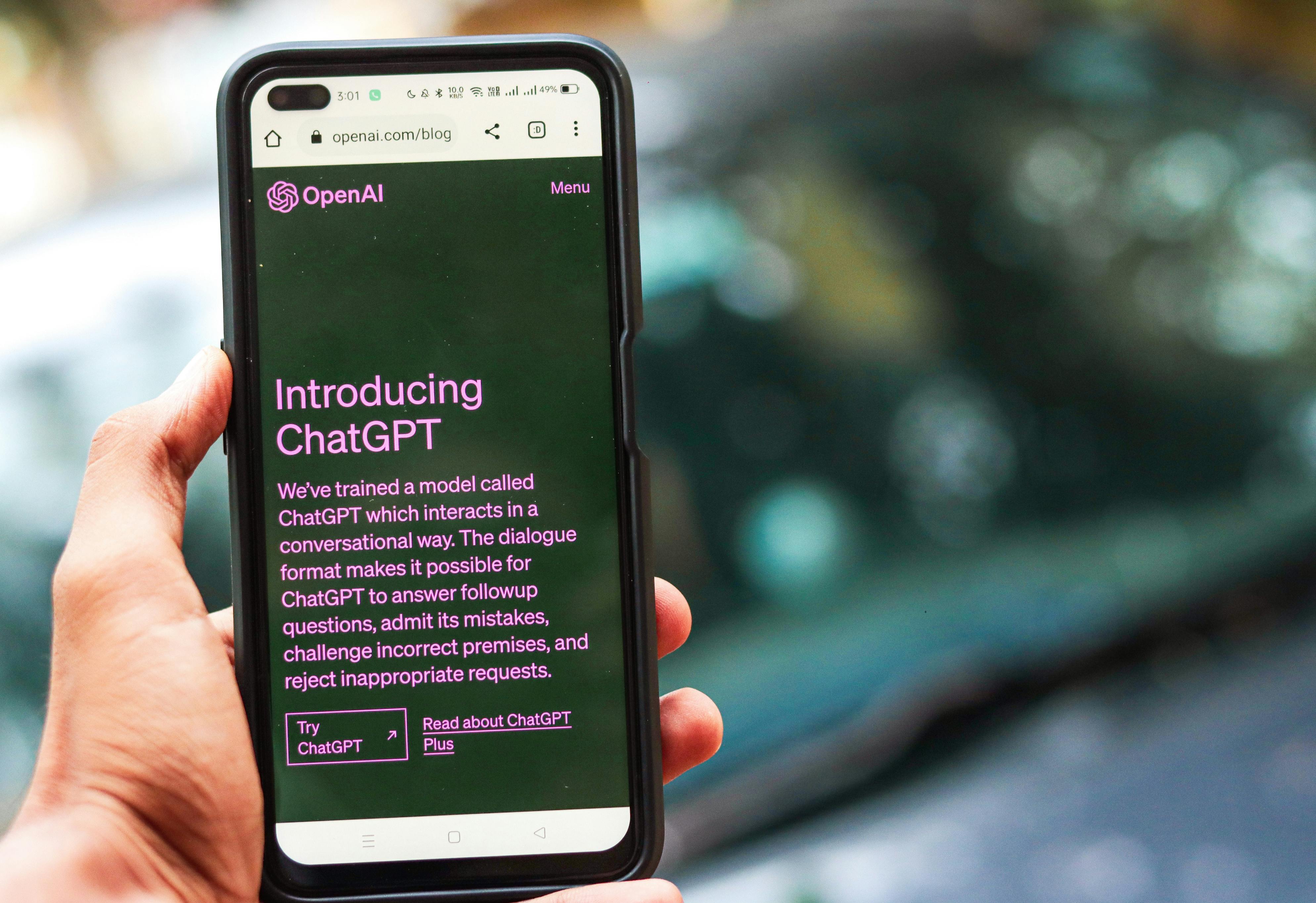
Unveiling the Potential Benefits and Drawbacks of Traffic Bots
Traffic bots can have a significant impact on website analytics, often resulting in skewed data. Understanding their influence and finding ways to mitigate this problem is crucial for accurate analysis. Firstly, traffic bots are automated programs that simulate human web browsing activities. While some bots aim to provide helpful services like search engine crawlers, others are malicious and perform unwanted actions on websites. Regardless of their intentions, their presence distorts website analytics by generating artificial traffic which may not reflect genuine user behavior. These bots can skew metrics such as visit duration, page views, bounce rate, and conversion rates. For instance, a high number of page views from bots can falsely imply increased user engagement. Additionally, these bots can significantly impact key performance indicators (KPIs) used to assess the success of marketing campaigns or website improvements. Skewed data resulting from traffic bots can make meaningful analysis difficult, hindering decision-making processes for website optimization. However, implementing effective strategies can help to mitigate the impact of traffic bots on website analytics: 1. Filter Bot Traffic: Employing reliable tools or services that can identify and exclude bot traffic from your analytics is essential. This allows you to focus on genuine user data when assessing website performance. 2. Set Up Robust Bot Detection: Utilize effective bot detection systems that efficiently separate real users from automated bot visits. Such systems use various techniques like analyzing user-agent strings, IP addresses, patterns of browser behavior, or employing CAPTCHA verification. 3. Regularly Monitor Analytics Reports: Analyze your website analytics reports frequently to identify any abnormal patterns or outliers in the data that could suggest potential bot activity. Understanding typical user behavior will further aid in recognizing anomalous metrics caused by bot visits. 4. Examine Traffic Sources: Evaluate the sources of your website traffic regularly. Identify suspicious sources with unusually high visit rates or dubious reputation, as they might be associated with bot-related activities. 5. Use Conversion Funnel Analysis: Assessing user engagement patterns across various user activities, known as conversion funnels, can help identify abnormal behavior indicative of bot interference. 6. Utilize Heatmap Tools: Heatmap tools provide visual representations of user interaction on webpages, highlighting where users are most engaged. You can leverage these tools to gauge the authenticity of user behavior metrics more accurately. 7. Regularly Update Security Measures: Keep software and security infrastructure up to date, including firewalls and anti-bot systems, to protect your website from potential attacks or unauthorized access. By employing these strategies, website owners and analysts can mitigate the impact of traffic bots on analytics data. Accurate website metrics lead to a better understanding of user behavior, allowing for improved decision-making and optimization efforts.

Exploring the Morality of Traffic Bots: Navigating the Thin Line Between Automation and Manipulation
Exploring the Morality of Traffic Bots: Navigating the Thin Line Between Automation and Manipulation Traffic bots, a form of automation technology designed to generate traffic to websites, have become increasingly common in the digital landscape. These automated systems simulate human behavior, visiting websites, clicking on links, and engaging with content just like a real user would. While traffic bots can serve various purposes, such as improving website metrics, driving ad revenue, or even conducting research, their ethical implications raise important questions about the morality behind their usage. At first glance, employing traffic bots may seem like a harmless tactic to boost website performance by attracting organic traffic and increasing visibility. However, as one delves deeper into their mechanisms and impact, it becomes apparent that the line between automation and manipulation is thin. One of the key moral concerns associated with traffic bots revolves around deception. By mimicking human behavior, these bots deceive website analytics systems into seeing increased traffic that isn't genuinely generated by humans. This deceptive practice may artificially inflate engagement metrics and mislead website owners and advertisers into believing their content is more engaging or popular than it actually is. Consequently, it becomes harder for businesses to gauge their true audience reception accurately. Additionally, traffic bots can impact the wider economic landscape. Traditional advertising platforms often charge advertisers based on their campaigns' performance metrics, such as the number of clicks or impressions received. With the influence of traffic bots artificially driving up these statistics, advertisers might end up paying more for less valuable traffic and decreasing return on investment. It raises questions about fairness and transparency for both advertisers and online platforms. Moreover, traffic bot usage can trigger a race for attention while compromising fair competition amongst different websites or content creators. When some resort to using traffic bots to increase their visibility, they gain an unmerited advantage over genuinely popular or innovative websites that rely on organic growth. As a result, maintaining a healthy digital ecosystem where quality and merit determine the success of online entities becomes challenging. From an individual perspective, web users may fall victim to manipulative tactics propagated by traffic bots. Imagine stumbling upon a website whose traffic is predominantly generated by automation. This can leave a visitor feeling deceived when they discover that those interactions were artificial, eroding trust in online experiences. However, exploring the morality of traffic bots shouldn't solely focus on their negative implications. There are legitimate use cases where traffic bots are ethically employed, such as aiding in load testing websites during development or enhancing security by simulating and mitigating potential cyber threats. In these scenarios, traffic bots act as valuable tools that positively contribute to innovation and safety in the digital landscape. When navigating this fine line between automation and manipulation, transparency and consent play pivotal roles. Emphasizing transparency in disclosing the presence of traffic bots and seeking user consent may help address some moral concerns. Clear communication with website visitors about their intent behind using traffic bots could mitigate potential harm caused by deception and manipulation. Finding a balance between optimizing website performance and preserving ethical practices is key. Legislation, industry standards, ethical guidelines, and continued discussions among stakeholders will crucially shape how society views and regulates the morality of traffic bots moving forward. In summary, the morality of traffic bots remains an essential topic of discussion in today's digital world. Understanding the potential impacts, both positive and negative, helps navigate the thin line between automation's benefits and the dangers of manipulation. Responsible bot deployment that respects transparency, consent, competition, fairness, and user trust can contribute to a healthier online ecosystem while achieving desired goals for webmasters.

SEO and Traffic Bots: Unintended Consequences on Search Engine Rankings
SEO, or search engine optimization, is an essential strategy used to improve a website's visibility and organic rankings on search engine results pages (SERPs). It involves various techniques and practices that aim to attract more visitors and increase the chances of a site being discovered by users who are actively seeking relevant information. One common tool in the realm of SEO is a traffic bot, designed to generate web traffic artificially. These software programs simulate real users by automatically visiting websites in large numbers, creating an illusion of increased popularity and engagement. While the use of traffic bots can seem appealing at first glance, there are unintended consequences that impact search engine rankings. Search engines like Google strive to deliver the most meaningful and valuable results to their users. As such, they continuously refine their algorithms and ranking systems to ensure the authenticity of the information displayed on SERPs. When traffic bots flood a website with artificial hits, search engines may interpret this surge in traffic as a sign of popularity and relevance. However, as search engines evolve, they become increasingly adept at distinguishing between real user engagement and artificially generated activity. The quality of traffic is crucial for search engines because it indicates the significance of a website. Traffic bots generate visits to a site without any actual user intent or interest in its content, resulting in shallow engagement metrics. Both search engines and human users can detect this lack of authentic interaction, triggering negative consequences for the site's rankings on SERPs. While using traffic bots might temporarily boost website traffic numbers and potentially fool search engines into awarding higher rankings, it is usually short-lived. Search engines develop algorithms that can differentiate between genuine organic traffic and artificial bot-generated visits. After detecting this deceptive activity, they take corrective measures to prevent such manipulation from having long-term benefits. Search engines impose penalties on websites found guilty of employing traffic bots to cheat their way up the rankings. These penalties can include downgrading the site's position in SERPs or even removing it entirely from search results, drastically affecting its online visibility and visitor count. Beyond the realm of search engines, there is also a question of ethics. Using traffic bots can be considered an unethical practice since it manipulates the integrity of search engine results, misleading users who rely on these rankings to find reliable information online. This can irreparably damage a website's reputation, causing loss of credibility in addition to decreased search engine rankings. A sustainable approach to SEO focuses on creating valuable content that meets the needs and interests of real users. By delivering relevant information and offering a positive user experience, a website is more likely to gain genuine engagement from organic visitors. Building high-quality backlinks, leveraging social media channels, optimizing on-page elements, and staying up to date with SEO best practices are some legitimate strategies to enhance a website's visibility and rankings without resorting to artificial tactics like traffic bots. In conclusion, while using traffic bots to artificially inflate web traffic might provide temporary gains in search engine rankings, the long-term consequences are negative and counterproductive. Authentic engagement from real users remains the cornerstone of a successful SEO strategy that not only elevates search engine rankings but also fosters trust and credibility among visitors.

User Experience vs. Bot Traffic: Finding the Balance for Genuine Engagement Online
User Experience vs. Bot Traffic: Finding the Balance for Genuine Engagement Online When it comes to online engagement, striking a balance between providing a positive user experience and dealing with bot traffic can be quite a challenging task. In the digital age we live in, bots have become increasingly sophisticated and play various roles, from enhancing search engine rankings to benign website analytics. However, the presence of bots can also have detrimental effects on user engagement and credibility. Let's delve into the intricacies of this issue. First and foremost, we need to understand the concept of user experience (UX) and its significance in online environments. UX encompasses all interactions users have while engaging with a website or application. It focuses on creating designs and interfaces that are aesthetically pleasing, accessible, and intuitive for users, ensuring they can easily achieve their goals and enjoy a seamless experience. However, genuine engagement is what we ultimately desire. When bots dominate online activity, it becomes challenging to discern real user engagement from automated interactions. This poses a significant threat to business credibility as customers may lose trust if they suspect their conversations or actions are being manipulated or outnumbered by non-human entities. The influx of bot traffic can drastically impact website performance and metrics such as click-through rates, bounce rates, or conversion rates. Bots often skew these measurements due to their ability to rapidly access content or repeatedly perform certain actions, inflating traffic numbers without any meaningful interaction from actual human users. But completely eliminating bot traffic is counterproductive as they serve important functions too. Search engine crawlers rely on bots to index and rank webpages accurately, ensuring relevant content is discoverable by users searching for information. Analytics bots help track website metrics accurately, providing data crucial for performance assessment and improvement. Therefore, completely blocking all bot traffic may hinder search visibility and result in a distorted understanding of visitor behavior. To find the elusive balance between UX and bot traffic engagement, organizations employ various strategies. Captchas or other methods to verify users' humanity are commonly used, ensuring that bots do not compromise website interactions. Careful analysis of website analytics can help identify unusual or suspicious behavior and pinpoint potential bot activity. Regularly monitoring and updating software and security measures help prevent bot attacks, while injecting interactive elements can provide a more genuine user experience. In conclusion, the influence of bot traffic on user engagement is a complex issue that organizations need to tackle effectively. Prioritizing user experience is vital for building trust and fostering genuine online engagement. While some level of bot traffic is inevitable and even beneficial, it is essential to find ways to mitigate its negative impact on genuine user interactions. By employing appropriate strategies and tools, businesses can strike a balance between creating engaging experiences for users and dealing with bots in a way that benefits both stakeholders and visitors alike.

Security Threats Posed by Malicious Traffic Bots and Effective Countermeasures
Security Threats Posed by Malicious Traffic Bots: Malicious traffic bots are automated programs designed to carry out unauthorized activities and malicious actions on the internet. While not all traffic bots are harmful, it is crucial to be aware of the security threats they can pose: 1. Data breaches: Traffic bots can attempt to gain unauthorized access to sensitive data by targeting login forms, databases, or file directories. They make repeated login attempts using stolen credentials or by brute-forcing weak passwords, potentially exposing valuable information. 2. Account takeover: By systematically testing numerous usernames and passwords, malicious bots aim to gain control over user accounts. Once compromised, these accounts can be misused for various malicious activities such as spreading spam, conducting phishing campaigns, or launching coordinated attacks. 3. Distributed Denial of Service (DDoS) attacks: Traffic bots can be programmed to flood a target website or application with an immense volume of simultaneous requests, overwhelming its capacity and making it unavailable to legitimate users. This produces downtime, loss of revenue, and damages a brand's reputation. 4. Content scrapping / Intellectual property theft: Using automated scripts, traffic bots can scrape large volumes of content from websites, steal product or pricing information, copyright-protected material, or even clone entire websites. This poses a risk in terms of competitive disadvantage and the misuse of proprietary information. 5. Ad fraud and click fraud: Bots can simulate human behavior and generate fraudulent clicks, views, or impressions on online ads or sponsored content. Advertisers end up paying for non-existent customer engagement or conversions while fraudsters benefit financially. 6. Impact on analytics: The presence of traffic bots can distort website analytics with fraudulent traffic patterns and inaccurate data. This misleads businesses while making informed decisions, detecting real trends, campaigns' success rates might become challenging amidst the noise generated by such malicious bots. Effective Countermeasures against Malicious Traffic Bots: Dealing with malicious traffic bots requires various countermeasures aimed at reducing their impact and safeguarding digital assets. Some effective approaches include: 1. Captcha tests: Implementing secure and reliable CAPTCHA challenges helps differentiate human users from bots, thus preventing automated attacks, account takeovers, or unauthorized access attempts. 2. Web Application Firewalls (WAF): Deploying WAFs can detect, block, and filter out malicious bot traffic based on predefined criteria such as suspicious behavior, IP origin, headers, or unusual user-agent stringsâ —minimizing the risk of DDoS attacks or unauthorized access. 3. Rate limiting and throttling: Imposing limits on the number of requests per user or IP address helps control bot activities. Setting thresholds helps exclude abusive bots while still maintaining accessibility for genuine users. 4. Advanced bot management solutions: Utilizing specialized tools can accurately identify and mitigate malicious automation patterns. Machine learning algorithms often play a crucial role here, enabling systems to evolve and detect new bot types continually. 5. Protocols enhancing bot detection: Optimizing protocols, including secure HTTP headers like CAPTCHA flags and analysis of network traffic can enhance early detection of malicious traffic bots. 6. User behavior analysis: Implementing algorithms to analyze user behavior helps detect anomalies and recognize patterns typical of traffic bots. Unusual patterns could trigger appropriate counteractions while protecting genuine user experiences. By staying diligent and implementing an array of countermeasures that suit specific needs, both individuals and organizations can greatly reduce the potential threats posed by malicious traffic bots.

How Artificial Intelligence is Shaping the Future of Traffic Bots for Better or Worse
Artificial Intelligence (AI) has been revolutionizing various industries, and the field of traffic bots is no exception. These sophisticated bots, powered by AI, have both positive and negative impacts on the future of online traffic. Let's explore how AI is shaping the world of traffic bots for better or worse. Firstly, AI-driven traffic bots have enhanced user experience on websites. They can understand user behavior patterns, preferences, and interactions to provide personalized recommendations. For instance, these bots can suggest relevant articles or products based on users' browsing history or past purchases, resulting in a more tailored experience that can help retain users and increase conversions. Moreover, AI-based traffic bots have helped website owners to successfully analyze and interpret data while improving decision-making processes. With the ability to process vast amounts of data quickly and accurately, these bots generate actionable insights. Website owners can then utilize this information to optimize their marketing strategies, content, and user interface effectively. Traffic bots integrated with chatbot capabilities have transformed customer support systems. AI allows bots to interact intelligently, helping customers with their queries or issues in real-time. By using natural language processing techniques, these bots can comprehend user inquiries accurately without human intervention. The availability of chatbots 24/7 significantly improves the customer support experience as it reduces waiting time for assistance. Additionally, artificial intelligence plays a crucial role in detecting and combating fraudulent activities aided by traffic bots. These smart algorithms can identify illegitimate patterns such as click fraud or click farms attempting to manipulate online advertising systems. Despite these noteworthy advancements, there are also significant concerns associated with the future of traffic bots powered by artificial intelligence. One major concern is the potential exploitation of intelligent traffic bots in unethical practices such as spreading disinformation or influencing public opinion through automated social media interactions. With the ability to mimic human-like behavior on a larger scale, AI-driven bots could maliciously amplify misinformation or engage in deceptive promotional activities. Furthermore, the rise of AI-powered traffic bots could lead to decreased authenticity and human presence online. The relentless automation of various tasks may hinder genuine organic interaction, engagement, and the ability to discern real users from bots. This potential loss of authenticity might impact brand credibility and online communities as people struggle to differentiate between honest engagement and automated interactions. Another adverse effect associated with AI-driven traffic bots is the escalation of cybersecurity risks. These advanced bots can be programmed to imitate legitimate user behavior, making them harder to identify and mitigate in case of malicious intent or security breaches. The increased sophistication in bot tactics may facilitate larger-scale cyberattacks that exploit unsuspecting users or overwhelm system resources. In conclusion, the evolution of artificial intelligence has transformed traffic bots for better user experiences, data analysis capabilities, and customer support systems. However, concerns arise when considering the potential ethical implications including misinformation propagation, decreased authenticity online, and amplified cybersecurity risks. Striking a balance between leveraging AI technologies while maintaining transparency, user-centricity, and robust security measures is crucial for harnessing the positive aspects of AI for the future of traffic bots.

Behind the Scenes: How E-commerce Sites Benefit from and Combat Traffic Bots
Behind the Scenes: How E-commerce Sites Benefit from and Combat Traffic Bots In today's fast-paced digital world, e-commerce sites have become an integral part of our daily lives. As these online platforms continue to grow in popularity, they face various challenges that can significantly impact their performance and overall success. One such challenge is dealing with traffic bots. Traffic bots are software applications or scripts designed to interact with websites just like real users do. These automated programs can perform various tasks including page views, clicking on links, adding items to shopping carts, submitting forms, and more. While some traffic bots serve legitimate purposes like web scraping or monitoring, others aim to manipulate site metrics or engage in fraudulent activities. Now that we understand what traffic bots are, let's delve into how e-commerce websites can actually benefit from them. Firstly, legitimate traffic bots or web crawlers are essential for search engines to index and rank websites accurately. Web indexing helps search engines display relevant and updated results when users initiate a search query. By allowing these bots access to their sites, e-commerce platforms are boosting their visibility and the likelihood of attracting organic traffic. Additionally, e-commerce sites can use traffic bots for monitoring purposes. By tracking visitor behavior data, such as click-through rates, popular pages/products, and bounce rates, businesses can gain valuable insights into user preferences and optimize their platforms accordingly. Such data can help detect any issues with the website's layout, functionality, or navigation that may be negatively impacting user experience and sales conversions. However, with benefits come drawbacks. E-commerce platforms must also be prepared to combat malicious traffic bots that seek to exploit their systems. Fraudulent bots come in various forms: inventory scalpers snatch up limited items quickly to resell at a higher price; credential stuffing bots attempt repeated logins using stolen login credentials in hopes of gaining unauthorized access; add-to-cart bots manipulate site inventory by leading to a false perception of demand; and even price scraping bots take advantage of vulnerabilities in order to extract low-cost deals or insider pricing information. To mitigate the impact of traffic bots, e-commerce websites employ various countermeasures. Implementing CAPTCHA challenges presented to users during certain activities helps differentiate between human and bot interactions. Additionally, rate-limiting techniques restrict the number of requests a particular user IP or session can make in a given time frame, preventing excessive bot-generated traffic. Advanced machine learning algorithms and behavior analysis technologies are utilized to detect abnormal patterns and identify potential bot activities. Pattern recognition, user profiling, and anomaly detection play critical roles in distinguishing suspicious traffic behavior from legitimate human activities. As technology evolves, so do the traffic bots. Hence, e-commerce sites must adopt continuous monitoring processes to stay vigilant against new types of bots that may emerge. Regularly updating security protocols, staying informed about bot-attack trends, and collaborating with cybersecurity experts are crucial steps towards maintaining a secure online environment and protecting both the profitability and reputation of these platforms. In conclusion, while there are legitimate traffic bots that benefit e-commerce platforms, combatting fraudulent ones is an ongoing challenge. Striking a balance between embracing beneficial web crawling practices and protecting against malicious intentions becomes imperative for businesses operating in the e-commerce sphere. Through careful monitoring, innovative security measures, and a commitment to resilience, e-commerce sites can continue to thrive amidst this technical battle with traffic bots.

Bandwidth Consumption and Website Performance: Assessing the Toll of Non-Human Traffic
Bandwidth Consumption and Website Performance: Assessing the Toll of Non-Human Traffic In today's digital landscape, where online businesses rely heavily on website performance and user engagement, traffic bots have become a significant concern. While some bots serve legitimate purposes like SEO crawlers or chatbots, others can harm website infrastructure, hamper user experience, and consume precious bandwidth without delivering any meaningful value. In this article, we will delve into the crucial aspects of bandwidth consumption and its impact on website performance resulting from non-human (bot) traffic. Bandwidth consumption can be defined as the amount of data transferred between a website visitor's device and the host server during a specific time period. The more data transferred, the higher the bandwidth usage. When it comes to non-human traffic, bots strain this valuable bandwidth. This strain can lead to slower page loading times, decreased server stability, and potential downtime – all impactful elements that negatively influence user experience. One aspect to consider is the distinction between "good" bots and "bad" bots. Search engine crawlers such as Googlebot or Bingbot fall under the category of "good" bots as they collect information to improve search engine results and drive organic traffic. However, other non-human traffic comprised of spam bots, malicious bots, competitive data scrapers, or even fake social media accounts fall into the "bad" bot territory. Non-human traffic brings disproportionately high bandwidth consumption due to several reasons. Firstly, these bots can visit pages at an immensely rapid rate compared to authentic human visitors. This constant influx increases the workload on servers as they must process each bot request individually. Secondly, bots often access irrelevant or rarely viewed parts of websites repetitively, wasting both server resources and bandwidth. These requests do little more than increase costs with no added value for businesses seeking genuine interactions. Moreover, non-human traffic may instigate unexpected and destructive consequences on website performance by disrupting analytical measurement systems. Web analytics engines provide valuable insights into user behaviors, allowing businesses to create data-driven strategies. When bots inflate website traffic by generating large numbers of unengaged visits, businesses risk diluting the integrity of these analytical systems. Data distortions can mislead decision-makers and compromise the accurateness of user engagement metrics. Furthermore, spambots intended to abuse comment sections or submit fraudulent form entries not only contribute to bandwidth consumption but can also damage the website's reputation. If malicious content is generated or if fake accounts proliferate, it erodes trust and adversely affects real users' experience. Additionally, frequent bot activity may trigger various security measures, leading to CAPTCHA prompts or IP blocking actions that hinder legitimate human visitors. To tackle the issue of bandwidth consumption and assess its toll on website performance, setting up effective bot detection systems is imperative. Strategies involving IP filtering, blacklist monitoring, CAPTCHA implementation, or employing machine learning algorithms can help identify and mitigate unwanted non-human traffic. Leveraging content delivery networks (CDNs) can also alleviate server load by caching widely accessed resources at geographically dispersed locations, reducing bandwidth reliance. Website administrators must proactively monitor website traffic patterns, scrutinize suspicious visits flagged by detection tools, and regularly fine-tune their mitigation tactics for optimal performance. Identifying and neutralizing rogue bot traffic plays a crucial role in preserving a fast and reliable website experience for genuine human visitors while ensuring efficient use of available bandwidth. In conclusion, bandwidth consumption resulting from non-human traffic poses a serious threat to website performance and user experience. Businesses need to be proactive in implementing robust bot detection mechanisms to minimize the strain on servers and preserve precious bandwidth resources. By effectively addressing this issue, web administrators can safeguard their online platforms, improve customer satisfaction, and sustain a high level of website performance.

The Dilemma of Ad Fraud: Traffic Bots as a Double-edged Sword in Online Advertising
In the vast landscape of online advertising, ad fraud poses a severe dilemma for marketers and advertisers alike. One crucial aspect contributing to this predicament is the increasing prevalence of traffic bots. Traffic bots are software programs designed to emulate human behavioral patterns online, thereby artificially inflating website traffic numbers. While they were initially developed with legitimate purposes such as web testing and data collection, they have become a double-edged sword in the world of online advertising. On one side, traffic bots carry detrimental consequences that significantly impact the effectiveness of digital ad campaigns. By generating fraudulent traffic, these bots deceive advertisers into believing that their ads have reached genuine human audiences. In reality, these impressions simply translate into wasted advertising budgets and reduced return on investment (ROI). Beyond monetary loss, the lack of real human engagement undermines trust in digital advertising as metrics like click-through rates or conversion rates become blatantly unreliable metrics for success. Furthermore, when campaigns perform poorly due to a surge in bot-generated traffic, marketers might end up making erroneous decisions based on skewed data. Misinterpreting low engagement can lead to adjustments that could ultimately negatively affect user experience and brand reputation. Consequently, the presence of traffic bots diminishes the overall efficacy of online advertising platforms since they cater primarily to non-human entities, obscuring true campaign performance. Yet, while traffic bots plague digital advertising systems with skepticism and fraud, they simultaneously offer a flip side that merits attention. Certain industry players argue that by employing traffic bots as a means to expose vulnerabilities within advertising channels and detect instances of ad fraud more effectively, marketers can take preventive measures to combat these issues proactively. By simulating patterns reminiscent of cybercriminals' activities through traffic bots, defenders unlock opportunities to hone their detection techniques and fortify their defenses against future attacks. Moreover, traffic bots contribute measurably to improving ad targeting algorithms and machine learning models by replicating diverse user actions and interests. This imitation opens pathways for data-driven decisions in advertising, enhancing the personalization of content and minimizing irrelevant ads for genuine users. By providing artificial interactions, traffic bots broaden the available data pool, enabling advertisers to make informed choices and deliver tailored experiences with accuracy. In the context of this dilemma, striking a balance becomes imperative. The challenge lies in harnessing the potential benefits of traffic bots while mitigating their detrimental consequences. Strengthening fraud detection mechanisms should be prioritized, along with partnering with reputable digital advertising platforms that employ stringent measures to combat ad fraud. Enhancing monitoring systems, employing advanced cybersecurity measures, and collaborating within industry alliances can play a pivotal role in reducing instances of fraud. Additionally, fostering transparency and establishing verification mechanisms that authenticate real human users' interactions can help restore trust in digital advertising channels. Advertisers need to ensure they regularly scrutinize their metrics for anomalies and suspicious activities to weed out fraudulent indicators effectively. Vigilance proves decisive in identifying traffic bot interference early on and minimizing its potential damage. Altogether, while traffic bots present complications that challenge the efficacy of online advertising, industry stakeholders must understand their potential positive contributions along with implementing robust preventive measures. Striving for transparency, cybersecurity enhancements, and prudently utilizing traffic bot insights bring greater promise in combating ad fraud and making digital advertising a more reliable and fruitful endeavor for all parties involved.

Legal Perspectives on Using Traffic Bots: Understanding the Boundaries and Implications
Using traffic bots to increase website traffic has become a popular tactic in the virtual world. However, there are certain legal perspectives surrounding their usage, involving boundaries and implications that should be considered. By understanding these aspects, one can navigate the legal landscape successfully. Firstly, it is essential to grasp the distinction between legitimate and illegitimate traffic bots. While some traffic bots can be designed with good intentions, simulating real user interactions or validating website performance, others may maliciously manipulate traffic for deceptive purposes. It is necessary to be cautious of abusive or fraudulent automated traffic practices as they may have legal consequences. One aspect to consider is the potential violation of terms of service (ToS) agreements set forth by websites or online platforms. Many websites explicitly prohibit the utilization of traffic bots in their ToS. Engaging in activities that contravene these agreements can lead to penalties such as suspension or termination of accounts. It is crucial to review the ToS of each platform before deploying traffic bots to ensure compliance and mitigate any resultant legal complications. Another legal consideration is related to intellectual property rights. Intellectual property encompasses copyrights, trademarks, and patents that creators hold over their works. Traffic bots must not replicate copyrighted content without proper authorization. Unauthorized reproduction of copyrighted material can give rise to copyright infringement claims and potential legal action. Before deploying a bot, ensure it does not infringe upon any intellectual property rights. Automated web scraping is another practice associated with traffic bots that merits attention from a legal standpoint. Web scraping entails extracting data from websites through automated techniques for various purposes. While web scraping itself is not illegal per se, certain conditions need to be met to keep it within acceptable boundaries. Adhering to robots.txt files or obtaining explicit permission from the website owner often suffices. However, scraping confidential or protected data without authorization can lead to serious legal issues. Moreover, laws governing consumer protection should also be considered while using traffic bots. When users interact with websites expecting genuine engagement or transactions, the use of traffic bots may mislead and deceive consumers. This can potentially be viewed as an unfair trade practice or a breach of consumer protection regulations. It is vital to ensure that traffic bots do not engage in deceptive activities that could harm consumer trust or rights. Lastly, some jurisdictions might have specific laws governing the use of automated traffic bots, targeting fraudulent practices like click fraud and ad fraud. Engaging in such activities knowingly or intentionally can lead to legal consequences at both the civil and criminal levels. Being mindful of these laws and regulations, consulting legal professionals if necessary, can help avoid any violations. In summary, understanding legal perspectives on using traffic bots is crucial to operate within legal boundaries and mitigate potential implications. Pay attention to website ToS, abide by intellectual property rights, respect data scraping norms, consider consumer protection regulations, and remain compliant with country-specific laws. Embracing a responsible approach while utilizing traffic bots will help ensure ethical practices in the digital realm without running afoul of potential legal outcomes.

Ethical Web Design: Incorporating Practices to Discourage the Use of Harmful Traffic Bots
Ethical Web Design focuses on the implementation of responsible practices that discourage the use of harmful traffic bots. These practices prioritize user experience, integrity, and fairness in online interactions. By adhering to ethical standards, web designers can create websites that deter or minimize the impact of malicious bot activity while enhancing overall user satisfaction. 1. Authentic user verification: Incorporating security measures, such as CAPTCHA or 2-factor authentication, ensures users' authenticity before allowing access to certain functionalities. This helps distinguish between humans and bots attempting to manipulate systems or collect data in unethical ways. 2. Sensible rate limits: Implementing rate limits on API endpoints discourages excessive traffic requests originating from bots. By setting reasonable thresholds, designers can prevent bots from overwhelming servers and disrupt the website's performance. 3. User-friendly interface design: Websites designed with superb usability tend to attract genuine users seeking a positive experience. Creating intuitive navigation, easily accessible content, logical flow, and clear instructions help keep users engaged while deterring bot activity. 4. Monitoring suspicious patterns: Continuously monitoring website traffic enables designers to detect patterns consistent with bot behavior. Implementing tools to analyze visitors' characteristics and activities can help identify potential bots early on and take necessary actions to prevent any harm they may cause. 5. Advanced bot detection techniques: Employing advanced techniques like signature-based detection, machine learning algorithms, or browser fingerprinting can help identify traffic that originates from malicious bots. Designing systems that periodically analyze user behavior and employ anomaly detection methods can further enhance anti-bot measures. 6. CSS-based defenses: Using Cascading Style Sheets (CSS) in creative ways, such as placing hidden links or forms that automatically populate for bots, allows web designers to fool malicious bots without impacting genuine human visitors' experience. These deceptive elements are usually invisible to regular users but serve as tripwires for easily identified and filtered out bots. 7. Regular software updates and patches: Keeping all software, including CMS platforms and plugins, up to date helps secure websites against vulnerabilities that bots can exploit. Staying proactive with security patches and following best practices in web development significantly reduces the risk of potential attacks by bots. 8. Responsible data collection and handling: Ethical web design promotes transparent information handling practices. Designers should provide clear explanations of the data collected from users, obtain valid consent, and securely store and transmit this information to maintain user trust. Disclosing how user data will be used helps deter malicious bots attempting to exploit personal information. 9. Supporting online communities: Web designers involved in ethical practices should participate in initiatives aimed at combating bots and improving overall internet security. Collaboration through open source communities, forums, or reporting programs allows sharing insights and developing collective countermeasures against harmful traffic bot activity. 10. Educating users: Raising awareness about bots' prevalence, their potential dangers, and how to identify suspicious activities enables users to be vigilant and report any suspicious behaviors encountered on websites. Web designers can contribute by creating educational resources or incorporating informative content about bots as part of their overall website experience. By incorporating practices like user verification, rate limiting, user-friendly interface, suspicious pattern monitoring, advanced bot detection techniques, CSS-based defenses, regular software updates, responsible data handling, supporting online communities, and user education into their design process, web designers can create a safer digital environment that discourages the use of harmful traffic bots.

Cross-platform Impacts of Traffic Bots: From Social Media to Informative Blogs
Cross-platform impacts of traffic bots refer to the effects these bots have across various digital platforms, ranging from social media to informative blogs. Traffic bots act as automated software designed to manipulate web traffic and engagement metrics on different online channels. While traffic bots may serve legitimate purposes, such as collecting data or running simulations, they are also commonly used for malicious activities like click fraud or artificially boosting website views. On social media platforms, traffic bots can have significant cross-platform impacts. Designed to mimic human behavior, these bots generate fake likes, followers, comments, and shares. This can trick social media algorithms into promoting certain accounts or posts, thus affecting the reach and visibility of genuine content. Increased traffic generated by bots may lead to inaccurate audience metrics and complicate advertising efforts since targeting becomes less effective if genuine users cannot be distinguished from bot-generated engagements. Moving beyond social media, traffic bots also impact informative blogs. Blogs aim to provide valuable content and engage with real readers. However, when blogs come under the influence of traffic bots, their impact shifts dramatically. Bots can artificially inflate page views, resulting in deceptive analytics that misrepresent a blog's actual audience size or reader engagement level. Ultimately, this could mislead blog owners about user behavior and limit feedback opportunities. Moreover, cross-platform impacts emerge when bot-driven engagement affects search engine rankings and user experience. Search engines consider factors like page views and click-through rates when determining the relevance and visibility of websites. If website traffic stats are largely fueled by fake visits from traffic bots rather than genuine user interest, search engines may inaccurately perceive the website's popularity or quality. Consequently, authentic websites might receive less visibility in search results while those employing traffic bots can inadvertently gain an unfair advantage. The ramifications of cross-platform traffic bot impacts go beyond misleading metrics. They have economic implications as businesses invest in digital advertising or influencer collaborations. Brands may unknowingly allocate their resources based on false engagement indicators provided by bots, leading to ineffective advertising campaigns and skewed return on investment measurements. Consequently, this can harm both businesses and trustworthy content creators who strive to connect with real audiences. Overall, cross-platform impacts of traffic bots significantly impact the digital ecosystem on several fronts. From distorting social media algorithms to deceiving bloggers and influencing search engine rankings, the effects go beyond artificially inflating metrics. Recognizing the adverse consequences posed by traffic bots is crucial not only for maintaining transparency and fairness across online platforms but also for ensuring that genuine content and interactions prevail over manipulative practices.

Real Case Studies of Businesses Affected by Traffic Bots: Lessons Learned and Recovery Strategies
Real Case Studies of Businesses Affected by Traffic Bots: Lessons Learned and Recovery Strategies Traffic bots, automated software designed to artificially boost website traffic, can have detrimental effects on businesses. By distorting website analytics, skewing user engagement metrics, and consuming server resources, traffic bots can disrupt operations and hinder real user experiences. Here are a few real case studies illustrating the impact of traffic bots on different businesses, along with the lessons they learned and the recovery strategies they employed. 1. Case Study 1: E-commerce Retailer An e-commerce retailer noticed abnormal spikes in website traffic and lacked corresponding increases in conversions or sales. Upon further investigation, they realized that a significant portion of their traffic was bot-generated. As a result, they not only experienced inaccurate customer data but also faced financial losses due to wasted advertising spend targeting non-existent customers. Through this experience, they learned the importance of frequent monitoring of website analytics to identify abnormal patterns. To recover and mitigate future attacks, they implemented more advanced bot detection tools and improved security measures by using CAPTCHA solutions during crucial user interactions. 2. Case Study 2: Media Publishing Company A media publishing company experienced inflated pageviews that did not align with their actual readership numbers. They discovered that an overwhelming amount of their website traffic came from malicious bots rather than genuine users. This not only devalued their ad impressions but also led to inaccurate data insights for future content creation decisions. While recovering from this incident, they learned the significance of distinguishing between human and bot traffic when analyzing key performance indicators (KPIs). They adopted stricter user engagement criteria, including measuring real user interactions instead of relying solely on pageviews or general visitor counts. 3. Case Study 3: Online Service Provider An online service provider witnessed a sudden surge in login attempts, account registrations, and form submissions. After investigation, they uncovered a bot-driven attack aimed at sabotaging their service by overwhelming their servers. As a result, legitimate users experienced severe login delays and downtimes, disrupting their overall satisfaction and trust. From this incident, the service provider understood the importance of implementing rate limiting techniques to mitigate brute-force attacks and distinguish between human and bot traffic effectively. Furthermore, they devised backup server strategies to provide uninterrupted service even during high-intensity bot attacks. These real case studies demonstrate just some of the challenges businesses face when dealing with traffic bots. From financial implications to compromised data accuracy and customer experiences, the consequences can be severe. However, by proactively monitoring website analytics, utilizing effective bot detection tools, and implementing security measures adapted to emerging threats, businesses can recover from such disruptions. Understanding the lessons learned from these experiences equips them with the knowledge required to safeguard their operations and ensure uninterrupted growth in the face of evolving digital threats.

Prevention and Early Detection: Tools and Techniques to Identify Fake Bot Traffic
Prevention and Early Detection: Tools and Techniques to Identify Fake Bot Traffic Identifying fake bot traffic is crucial for businesses and website owners who rely on accurate statistics and genuine user engagement. These tools and techniques aid in prevention and early detection, ensuring the integrity of data obtained from website analytics. Let's explore some fundamental methods used to combat fraudulent bot traffic: IP Filtering: One common way to prevent fake bot traffic is through IP filtering. By creating a blacklisting or whitelisting mechanism, website owners can block or allow specific IP addresses based on known bots or legitimate users. Bot Detection Services: Numerous third-party services exist that specialize in bot detection and prevention. These services apply sophisticated algorithms to analyze patterns, behavior, and characteristics, differentiating between legitimate users and suspected bots. User-Agent Analysis: Examining the HTTP headers of visitors' web browsers aids in identifying fake bot traffic. Bots often use generic User-Agents or altered versions while legitimate users' User-Agents have specific patterns that can be detected. CAPTCHA Verification Systems: Utilizing CAPTCHA (Completely Automated Public Turing Test to Tell Computers and Humans Apart) verification mechanisms has been proven effective in combating bot traffic as it distinguishes human behavior from automated actions. Behavioral Analysis: Analyzing visitor behavior patterns enables spotting deviations and inconsistencies that indicate suspicious bot activities. For instance, unnatural session durations, superhuman browsing speeds, or sudden spikes in page views are strong indicators of bot involvement. Traffic Patterns Analysis: Monitoring visit velocities to identify atypical spikes allows for early detection of abnormal and potentially fraudulent traffic patterns. Unexpected surges in clicks or conversions might suggest the presence of malicious bots. Honeypots and Trap Links: Honeypots are hidden links intended solely for bots to interact with intentionally false information. If activity occurs on these links, it confirms the presence of a bot. Incorporating trap links within web pages can also intercept crawler bots, revealing their identity. JavaScript Challenges: Using JavaScript to deliver challenges or interact with visitors before access is granted can detect and deter bots. Verification tests such as completing a puzzle or clicking a specific image engage human users while dissuading bot interactions. Machine Learning Models: Evolving methods involve leveraging machine learning models to classify and detect fake bot traffic. These models constantly adapt to evolving bot techniques by continuously learning patterns of behavior, enhancing their efficiency over time. Continuous Monitoring and Analysis: Consistently monitoring website traffic, analyzing user behaviors, tracking suspicious activities, and keeping up with new defensive tools are critical to staying ahead within the realm of bot traffic prevention. Remember that prevention and detection go hand in hand when dealing with fake bot traffic. Employing these mentioned strategies collectively helps ensure trustworthy website analytics and provides actionable insights to organizations, ultimately leading to improved decision-making processes.

The Future of Digital Marketing in an Era Dominated by Sophisticated Bot Traffic
The Future of Digital Marketing in an Era Dominated by Sophisticated Bot Traffic Digital marketing has evolved significantly in recent years, and its future is set to become even more complex due to the rise of sophisticated bot traffic. Bots, which are automated software programs designed to perform various tasks on the internet, have become an increasing challenge for marketers to navigate. To understand the future of digital marketing in this era, we must explore the implications and potential strategies to combat the influence of these bots on various platforms. One major area impacted by bot traffic is online advertising. Bots can skew ad impressions, click-through rates, and even lead to fraudulent ad engagements. This not only affects campaign results but also leads to wasted marketing budgets. Advertisers will need to adopt advanced machine learning algorithms and artificial intelligence techniques to identify genuine user engagement from bot activity accurately. Furthermore, ad platforms will develop improved fraud detection mechanisms, relying heavily on data analysis and behavioral patterns to ensure a higher-quality advertising environment. Social media platforms are not spared from the dominance of bots either. With the rise of bot-generated accounts across social media platforms, companies face the challenge of deciphering genuine user feedback from automated responses. In this context, brands need to invest in sentiment analysis tools and closely monitor key performance indicators such as sentiment scores, engagement rates, and user interactions to weed out bot-generated content. Maintaining a strong brand presence through authentic audience engagement will be vital but increasingly challenging in this era. Search engine optimization (SEO) faces specific challenges as well. The use of bots for automating activities that mimic human behavior for SEO optimization is steadily increasing. This includes tactics such as content scraping, generating fake backlinks, or keyword stuffing. As search engines become more sophisticated with their algorithms, marketers must focus on creating quality content that effectively targets real users rather than attempting to appeal to these bots. Additionally, staying updated with SEO best practices as search engines evolve will be crucial to maintain website visibility and rankings. Email marketing is another domain influenced by bot traffic. Bots can skew open rates, deliverability, and engagement metrics. In the future, personalized content and interactive elements within emails may help distinguish authentic human engagement from automated activity. Greater reliance on artificial intelligence-based email bots to detect and filter spam messages will also play a significant role in maintaining a clean and efficient email marketing ecosystem. While the future of digital marketing may appear challenging with bots dominating online spaces, marketers have opportunities to adapt their strategies. By leveraging advanced technologies including machine learning, AI algorithms, and sentiment analysis tools, marketers can combat bot traffic effectively. Emphasizing authentic user engagement, creating quality content, and staying abreast of evolving best practices will be crucial for businesses seeking to thrive amidst this era of sophisticated bot traffic.
